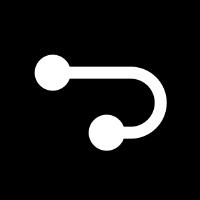Agentic AI Comparison:
AgentGPT vs Manus
Introduction
This report provides a detailed comparison between two autonomous AI agents, AgentGPT and Manus, focused on the metrics of autonomy, ease of use, flexibility, cost, and popularity. Both tools represent the next generation of AI, emphasizing autonomous task completion with minimal human intervention. The following evaluation is grounded in recent reviews and side-by-side feature analyses from 2025.
Overview
AgentGPT
AgentGPT is an AI agent accessible via the web that allows users to deploy autonomous AI agents capable of carrying out complex multi-step tasks. It is built for flexibility, integrates well with existing systems, and offers a user-friendly setup for orchestrating and monitoring tasks, primarily geared towards developers, technical teams, and advanced users.
Manus
Manus is designed as an action-oriented AI assistant. Rather than focusing on conversation, Manus specializes in carrying out delegated tasks entirely autonomously—such as email management, content calendar creation, and research. It emphasizes productivity by minimizing the need for user interaction, making it ideal for users who want to assign tasks and return to completed outcomes.
Metrics Comparison
autonomy
AgentGPT: 8
AgentGPT can autonomously complete sophisticated task chains and allows users to customize the degree of autonomy. It sometimes requires periodic human input or oversight for complex scenarios.
Manus: 10
Manus is designed with full autonomy at its core, handling diverse and complex tasks end-to-end, including workflow learning and multi-agent coordination, often requiring no further user input after task assignment.
Manus leads in autonomy, delivering fully hands-free execution across most use cases, while AgentGPT offers strong autonomy but typically benefits from, or requires, some user oversight in multi-step or sensitive workflows.
ease of use
AgentGPT: 8
AgentGPT offers a streamlined web interface, well-documented setup, and user-friendly controls. However, optimal use, especially in building or chaining tasks, is usually easier for users with some technical background.
Manus: 7
Manus' 'set-it-and-forget-it' approach can feel less intuitive at first because it lacks interactive chat guidance and may require adjustment. Users unfamiliar with non-conversational UIs may face a slight learning curve, though it excels after initial onboarding.
AgentGPT is generally easier to adopt for users familiar with prompt engineering and task design, while Manus may require an adjustment period but greatly simplifies ongoing use for hands-off task management.
flexibility
AgentGPT: 9
AgentGPT offers a high degree of flexibility with customizable agents, task chaining, and broad integration options, making it suitable for varied domains from research to operational automation.
Manus: 8
Manus excels at automating office and productivity tasks but is somewhat more prescriptive in workflow design. Its flexibility is highest in operational and administrative domains and less so in creative or conversational roles.
Both tools are highly flexible, but AgentGPT is preferred when advanced customization and multi-domain task orchestration are needed. Manus stands out in streamlining and optimizing defined business processes.
cost
AgentGPT: 8
AgentGPT is competitively priced compared to other autonomous agent platforms, with a range of plans catering to both individual and enterprise customers. Transparent pricing makes it accessible to a broad audience.
Manus: 7
Manus is positioned as a premium office productivity automation tool. While offering great value for power users, its subscription costs are generally higher due to advanced autonomous features and may be less accessible for individual or smaller-scale users.
AgentGPT is more accessible in terms of cost, while Manus targets productivity-focused professionals and enterprises at a slightly higher price point.
popularity
AgentGPT: 8
AgentGPT has established a significant user base, particularly among developers and early adopters in the AI community, with growing adoption in enterprise environments.
Manus: 9
Manus has surged in popularity in 2025, capturing broad attention for its productivity-oriented automation and receiving high marks in independent reviews and tech podcasts.
While both tools are widely recognized, Manus has recently seen faster growth in user adoption, especially among business professionals seeking autonomous workflow automation.
Conclusions
Both AgentGPT and Manus represent the cutting edge of autonomous AI agents in 2025, but differ in focus and best-fit scenarios. AgentGPT excels in flexibility, customization, and ease of adoption for technically skilled users. Manus stands out for ultimate hands-free productivity, offering unmatched autonomy for users who want tasks executed with minimal guidance. Manus currently leads in autonomy and popularity among office professionals, while AgentGPT remains a favorite for users needing granular control and broad applicability. Selection should be based on whether the user prioritizes ultimate autonomy (Manus) or flexible, customizable orchestration (AgentGPT).

